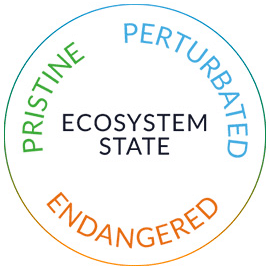ECOLOGICAL COMPENSATION
ERC sequence and compensatory measures
The law for the recovery of biodiversity, nature and landscapes of August 8, 2016 strengthens the obligation to compensate for the residual impacts of a project and sets a new framework: the sequence “Avoid – Reduce – Compensate”.
The ERC sequence carries a hierarchical principle. The first is to avoid the impacts of a development project as much as possible, then to reduce them and finally to compensate for them.
Current ecological equivalence calculations still raise scientific and technical questions as to the concepts and knowledge to be mobilized and the evaluation methods to be developed and implemented. This field is all the more experimental in the marine field where no method is really validated.
Despite its limits, the calculation of ecological equivalence is an opportunity to share a rational view of compensation measures by integrating quantified data on the area and ecosystem services rendered by habitats.
Andromède Océanologie offers a simple and operational calculation derived from the American method UMAM (Uniform Mitigation Assessment Method, Florida administrative code) as well as a complete panel of measures adapted to shipyards.



![[MISSION REPIC] La mission REPIC (REstaurer la Posidonie Impactée par l’anCrage) a repris ! Depuis plusieurs jours, les plongeurs et biologistes marins récoltent, préparent les fragments et repiquent à la main sur le site de Beaulieu-sur-Mer. Déjà, plus de 50 h de plongée ont été cumulées afin d’engendrer la reprise sur des zones de matte morte où l’herbier de Posidonie a disparu à cause des nombreux ancrages. Entre 2019 et 2023, 2000 m2 ont été repiqués et un taux de survie de 80 % révélé. Sur cette saison 2024, la restauration et le suivi scientifique auront lieu sur 11 semaines réparties entre juillet, août et septembre. Vous pouvez retrouver les résultats et le déroulé des missions précédentes sur YouTube : https://www.youtube.com/watch?v=gCMqYBNX1Lc En attendant les résultats de l’année, voici quelques photos de ces premiers jours de repiquage ! Merci à nos différents partenaires pour leur soutien cette année encore ! @en_immersion_eau @naosglobal @maif.fr #fondationartelia](https://www.andromede-ocean.com/english/wp-content/plugins/instagram-feed/img/placeholder.png)